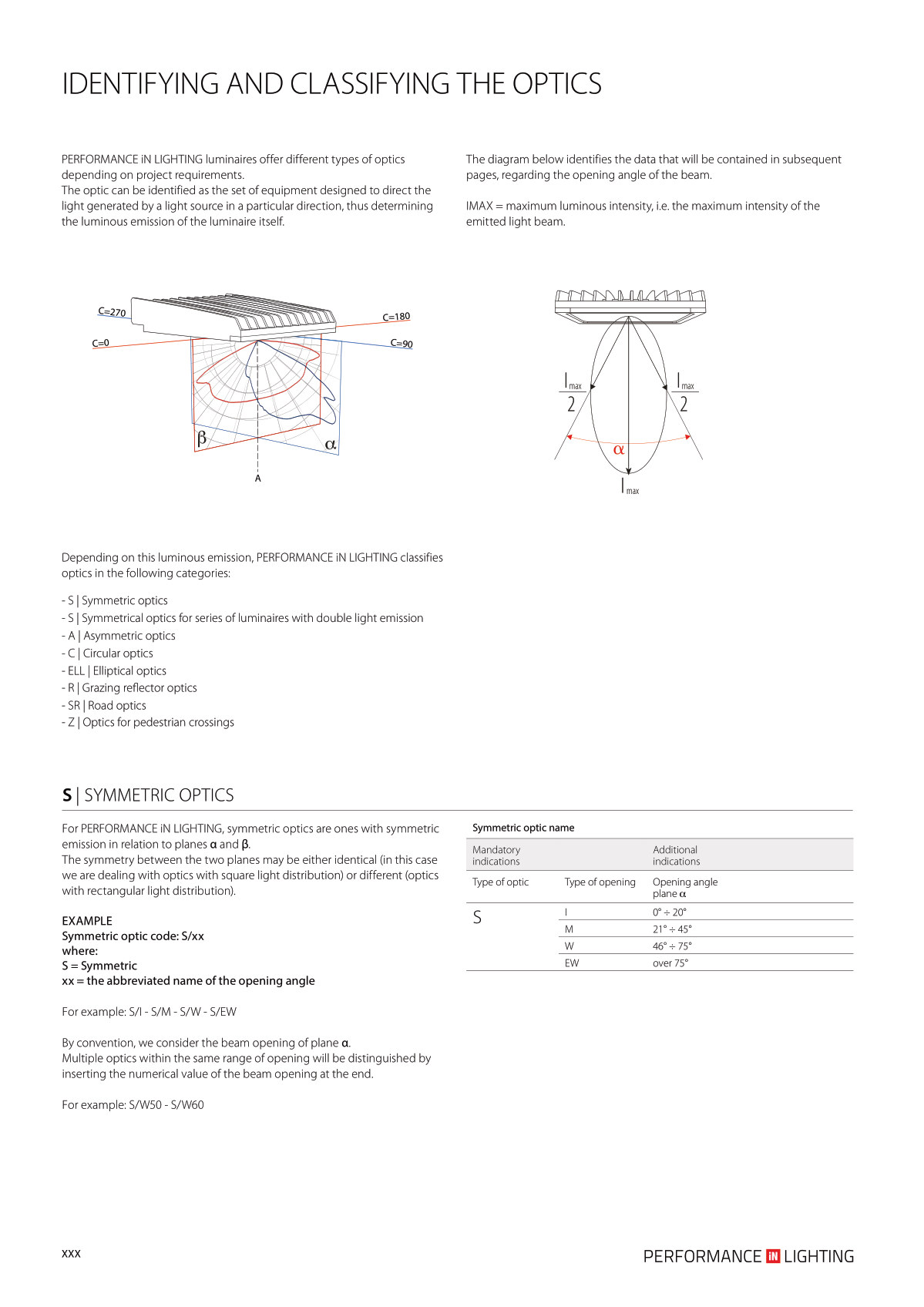S
C=90
C=0
A
C=180
C=270
Imax
2
Imax
2
I max
IDENTIFYING AND CLASSIFYING THE OPTICS
PERFORMANCE iN LIGHTING luminaires offer different types of optics
depending on project requirements.
The optic can be identified as the set of equipment designed to direct the
light generated by a light source in a particular direction, thus determining
the luminous emission of the luminaire itself.
The diagram below identifies the data that will be contained in subsequent
pages, regarding the opening angle of the beam.
IMAX = maximum luminous intensity, i.e. the maximum intensity of the
emitted light beam.
For PERFORMANCE iN LIGHTING, symmetric optics are ones with symmetric
emission in relation to planes α and β.
The symmetry between the two planes may be either identical (in this case
we are dealing with optics with square light distribution) or different (optics
with rectangular light distribution).
EXAMPLE
Symmetric optic code: S/xx
where:
S = Symmetric
xx = the abbreviated name of the opening angle
For example: S/I - S/M - S/W - S/EW
By convention, we consider the beam opening of plane α.
Multiple optics within the same range of opening will be distinguished by
inserting the numerical value of the beam opening at the end.
For example: S/W50 - S/W60
Symmetric optic name
Mandatory
indications
Additional
indications
Type of optic
Type of opening
Opening angle
plane a
I
0° ÷ 20°
M
21° ÷ 45°
W
46° ÷ 75°
EW
over 75°
- S | Symmetric optics
SYMMETRIC OPTICS
- S | Symmetrical optics for series of luminaires with double light emission
- C | Circular optics
- A | Asymmetric optics
- SR | Road optics
- Z | Optics for pedestrian crossings
- ELL | Elliptical optics
Depending on this luminous emission, PERFORMANCE iN LIGHTING classifies
optics in the following categories:
- R | Grazing reflector optics
XXX
S |


